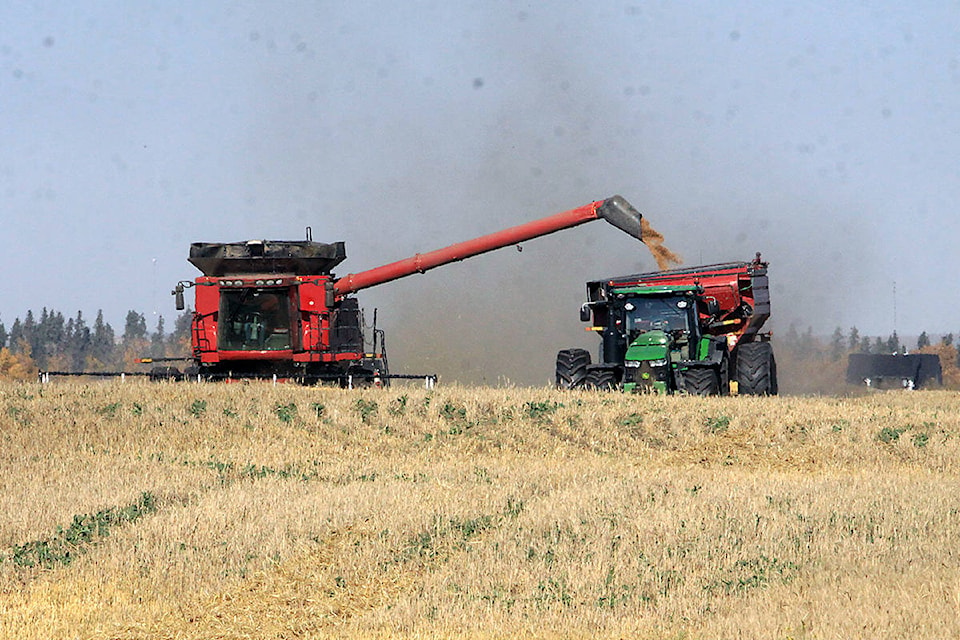Last week I got carried away with writing about the stress of haying when I titled the column “the joys and stress of haying.”
I really wanted to talk about the experience of being in the middle of a crop of hay with all its flowers and colours. Unfortunately, the flower part may be “weeds” or less desirable plants for livestock feed.
The flowers, on the other hand, might just be the bloom on the planted crop of hay. Timothy, for instance, has tiny purple flowers on a long seed head. Clover is everything from white to large red, with pink and white being another variety.
Alfalfa can be yellow and different shades of purple.
My memory returns, when I am in the hayfield, to a time when I had just returned to the ranch full time and I was wearing Polaroid-type sunglasses, which enhanced the reds and greens of the standing hay colour.
I was looking at the world through rose-tinted glasses, in fact.
It seemed I was on a garden path, with the colours being enhanced by the glasses. If you want aesthetics with your work, try the glasses.
The other experience that is forever with me is the delusion I had when I first got glasses that magnified (progressive lenses). The hay crop looked so tall and the windrows coming off the back of the swather seemed so high and full.
Then when the glasses came off, there was the less than fulsome crop, rather a poor crop.
Some might turn to enhancing drugs to create the illusion of beauty or fullness.
My preference is to look closely at even the small things of beauty, like the flowers on many of the shrubs and marvel at nature’s diversity. The tiny yellow flowers on wild gooseberry come to mind.
Joys other than colour and volume of plants in the hayfield can be a good to great crop that has happened because of the nurturing and the stewarding of the field at one’s own hand.
Sometimes there are disappointments at experiments that don’t quite work out, but we learn and realize that nothing ventured means nothing gained.
Or, you can say that at least you tried something, tried to do the right thing and it did or didn’t work out.
Most of what is worthwhile doing takes time. Soil health promotion, for instance, is a long process.
Quick fixes may not be sustainable, even if they are immediate.
The joys of harvesting a hayfield that has been stewarded over the years and has reached level of fullness and balance, then, is a beautiful thing: a beautiful thing to appreciate and marvel at even if its appearance is enhanced by looking through rose-tinted glasses.
We do try not to delude ourselves, but if that helps to get through a trying day with machine breakdowns or unco-operative weather, so be it.
I have traded off the Polaroids for brown/gray self-tinting glasses, to shade the eyes. And I accept that the glasses will distort, but a least I can see. Perception is, after all, altered by many things. Beauty begins and ends in the mind, even on a tractor on a darn hot day after long weeks at the sometimes stressful job of haying.
Good luck to you all who are at this task. May you find a reality that gives you strength to carry on with the long game of ranching and farming.
David Zirnhelt is a rancher in the Cariboo and member of the Cariboo Cattlemen’s Association. He is also chair of the Advisory Committee for the Applied Sustainable Ranching Program at Thompson Rivers University Williams Lake Campus.
READ MORE: The joys and stress of haymaking
